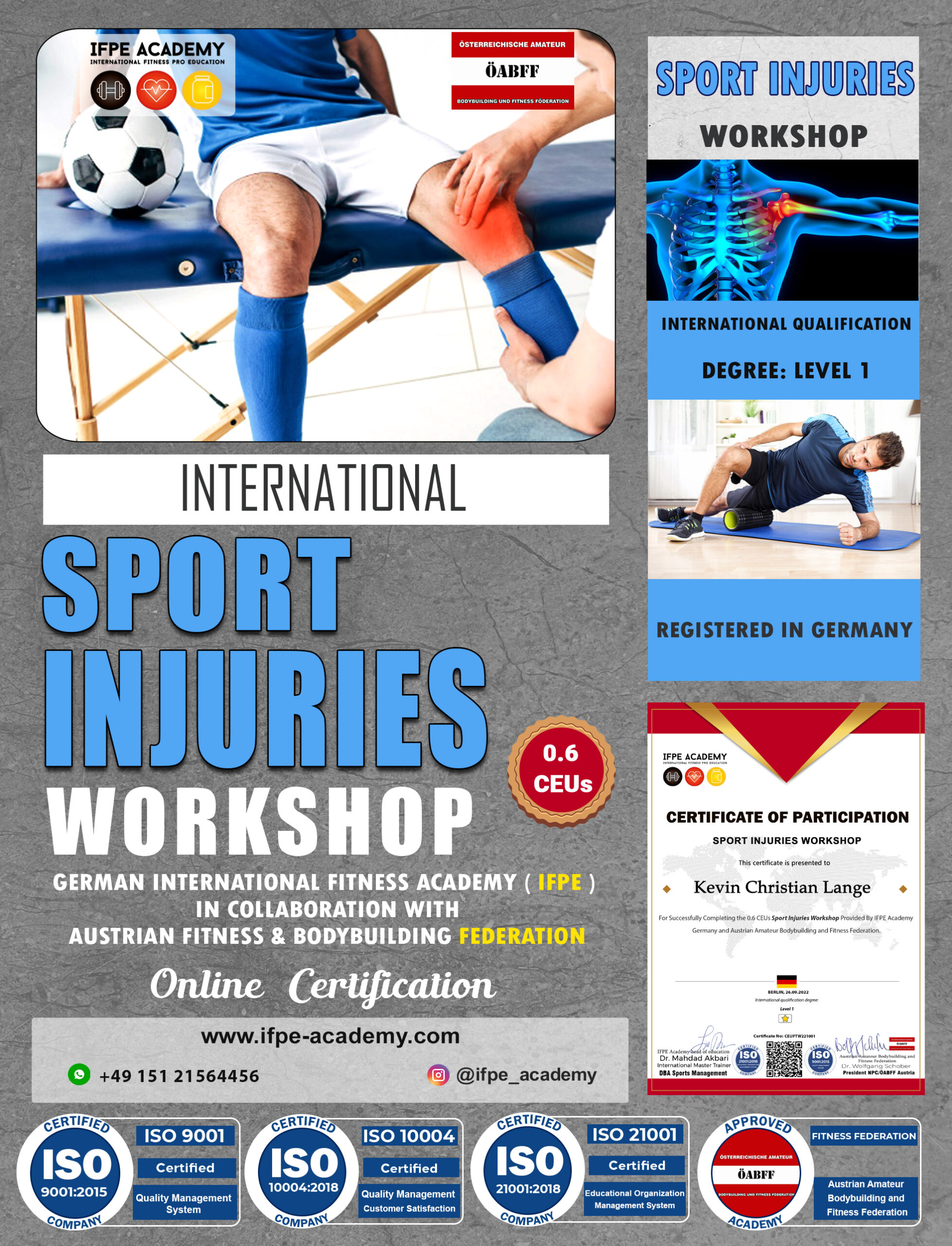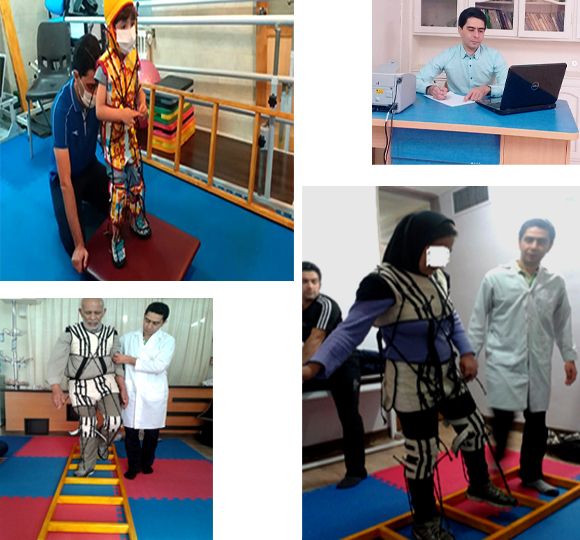SPORT INJURIES

SUMMARY OF SPORTS INJURIES
Common injuries include bruises, sprains, strains, joint injuries and nose bleeds.
Medical investigation is important, as leaving an injury untreated can have far more severe consequences.
LEARN MORE ABOUT YOUR INSTRUCTORS
Congress of design and programming (Iranian body building federation) 2017
Sport effect of family mental (International center of conferences sustainable development of Islamic world science) 2016
Sport psychology (International center of conferences sustainable development of Islamic world science) 2016

ABOUT THE COURSE OF SPORTS INJURIES
Sports injuries are commonly caused by overuse, direct impact, or the application of force that is greater than the body part can structurally withstand. There are two kinds of sports injuries: acute and chronic. An injury that occurs suddenly, such as a sprained ankle caused by an awkward landing, is known as an acute injury.
Chronic injuries are caused by repeated overuse of muscle groups or joints. Poor technique and structural abnormalities can also contribute to the development of chronic injuries. Medical investigation of any sports injury is important, because you may be hurt more severely than you think. For example, what seems like an ankle sprain may actually be a bone fracture.
SYLLABUS
- CHAPTER 1
- Type of Sport Injuries Prevention
- Systematic Sport Injuries Prevention
- Risk Factor of Sport Injuries
- Important Factors in the Prevention Sport Injuries
- CHAPTER 2
- Anterior Cruciate Ligament
- Acute Ankle Injuries
- Frozen Shoulder
- Tennis Elbow
FAQ
When will I have access to the lectures and assignments?
Access to lectures and assignments depends on your type of enrollment. If you take a course in audit mode, you will be able to see most course materials for free. To access graded assignments and to earn a Certificate, you will need to purchase the Certificate experience, during or after your audit. If you don’t see the audit option:
- The course may not offer an audit option. You can try a Free Trial instead, or apply for Financial Aid.
- The course may offer ‘Full Course, No Certificate’ instead. This option lets you see all course materials, submit required assessments, and get a final grade. This also means that you will not be able to purchase a Certificate experience.
What will I get if I purchase the Certificate?
When you purchase a Certificate you get access to all course materials, including graded assignments. Upon completing the course, your electronic Certificate will be added to your Accomplishments page – from there, you can print your Certificate or add it to your LinkedIn profile. If you only want to read and view the course content, you can audit the course for free.
Is financial aid available?
Yes. In select learning programs, you can apply for financial aid or a scholarship if you can’t afford the enrollment fee. If fin aid or scholarship is available for your learning program selection, you’ll find a link to apply on the description page.
Why should I take this course again? I already took Financial Markets from Professor Shiller before!
Yes. In select learning programs, you can apply for financial aid or a scholarship if you can’t afford the enrollment fee. If fin aid or scholarship is available for your learning program selection, you’ll find a link to apply on the description page.

